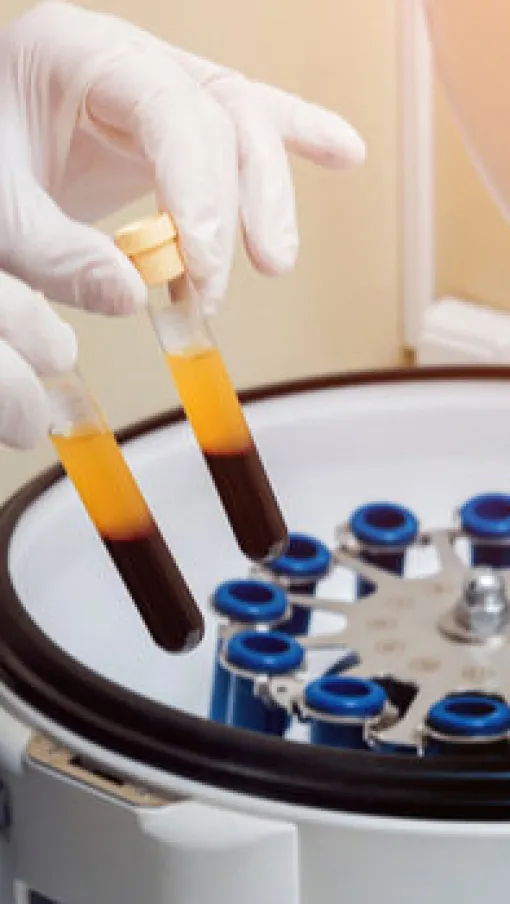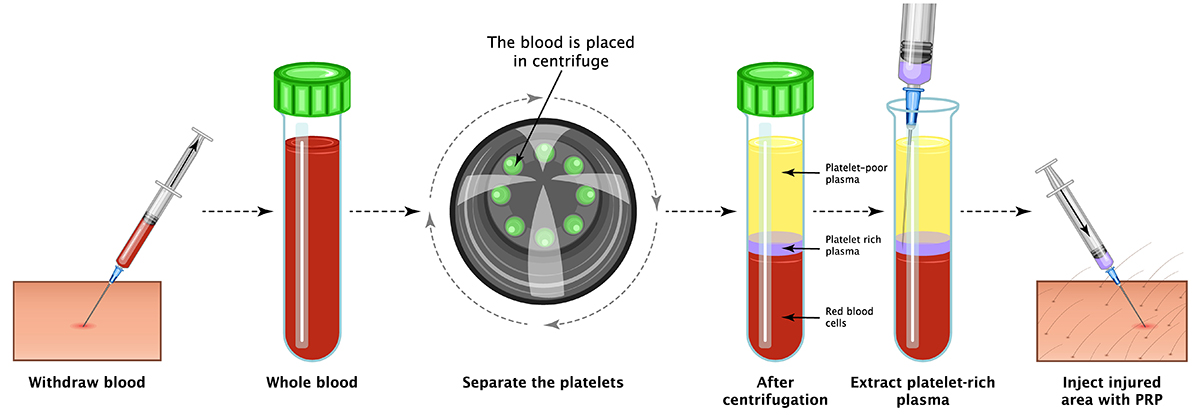
PRP Injection
Therapy

What is PRP Injection Therapy?
PRP therapy has been in use for over 20 years for treating injuries. Its increasing popularity in sports medicine has made it a viable opportunity to treat thousands. The body treats injuries as platelets collect and clot at the injury site. By injecting a concentrated number of platelet rich plasma at the injury site, the body's healing can take place faster and to a greater degree. PRP injection therapy is relatively fast in its actions.
PRP therapy for tendonitis, including golfers' elbow and tennis elbow is very effective. PRP injections in the site of inflamed tendons have anti inflammatory effects.

An Ideal Option
At Total Body Therapy of Georgia our PRP treatments are an ideal option for many medical issues at any stage of life. PRP injection therapy offers patients a way to address physical ailments without invasive in-patient surgery. Due to this, PRP therapy has become a popular option for patients who are interested in procuring non-invasive medical treatments.
PRP injection therapy uses our own body's platelet rich plasma to invoke healing and repair in specified areas. These areas that you are experiencing aches, pain and chronic discomfort from may include an inflamed tendon or tendonitis, joint pain, ligament tear, muscle injury or other. PRP is a process that uses a sample of your own blood to isolate platelet rich plasma which contains growth factors and cytokines and inject it back into problem area. As such, patients are more likely to avoid rejecting the treatment therapy.

Why Choose
PRP Injection Therapy?
Platelet rich plasma derived directly from a patient can be a very successful treatment option for patients who do not wish to undergo surgical procedures, would like to speed up the healing process or have tried other therapies without success. Platelet rich plasma treatment therapy has been used successfully to alleviate pain in joints, tendons, ligaments and muscles. The success of these treatments has let to its use in other treatment modalities.
Benefits & Side Effects of PRP
Benefits of PRP Injections
PRP injections utilize the body's own cells to improve target areas that would otherwise be impossible to effect under routine conditions. Patients that undergo PRP therapy may rest assured that the repair cells found in their plasma naturally heals wounds and inflamed areas. Physicians are assured that by guiding the autologous blood plasma directly into the patient's preferred target area they can achieve the most optimal results. By undergoing PRP therapy, patients are able to avoid the possibility of rejecting this injection therapy and increase the possibility of improving troublesome areas. The downtime for such a procedure is very low and patients can usually continue with their daily activities as before.
Our medical team has been trained specifically in PRP injections and will review the benefits of PRP injections with you during your initial consultation and guide you in your treatment options. Our expert staff will review your concerns and cater a PRP treatment unique to your needs with optimal benefits in mind.
Potential PRP Side Effects
During the plasma replacement therapy, a small amount of blood is withdrawn from a patient. Upon extracting this vital fluid, plasma will be separated from the blood and stored in an individual container. Afterward, the patient's blood is returned without a long delay. This part of the PRP injection therapy may cause patients to feel slightly fatigued or lightheaded. To reduce these symptoms, be sure to drink plenty of water and consume a healthy meal before each session.
In addition to the plasma replacement therapy symptoms, patients may experience side effects from the PRP procedure. Although the needle used during the PRP therapy is typically small, the injection site(s) may be red for a few hours after treatment. Usually symptoms subside on their own within 24 hours.
See How It Works
Trained physicians will start the process by extracting the patient's plasma. This plasma replacement therapy typically lasts for approximately 30 minutes to 1 hour. During this time, the intimate details of a patient's PRP treatment will be strategically organized for optimal results.
